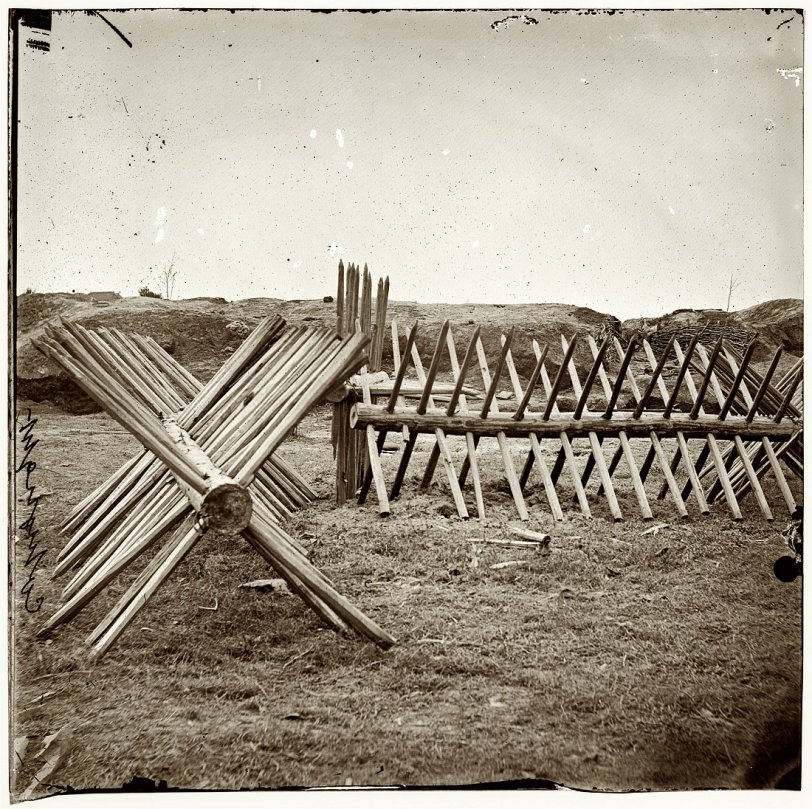


Framed or unframed, desk size to sofa size, printed by us in Arizona and Alabama since 2007. Explore now.
Shorpy is funded by you. Patreon contributors get an ad-free experience.
Learn more.

- Freeze Frame
- Texas Flyer wanted
- Just a Year Too Soon
- WWII -- Replacing men with women at the railroad crossing.
- Yes, Icing
- You kids drive me nuts!
- NOT An Easy Job
- I wonder
- Just add window boxes
- Icing Platform?
- Indiana Harbor Belt abides
- Freezing haze
- Corrections (for those who care)
- C&NW at Nelson
- Fallen Flags
- A dangerous job made worse
- Water Stop
- Passenger trains have right of way over freights?
- Coal
- Never ceases to amaze me.
- Still chuggin' (in model form)
- Great shot
- Westerly Breeze
- For the men, a trapeze
- Tickled
- Sense of loneliness ...
- 2 cents
- Charm City
- What an Outrage
- Brighton Park
Print Emporium
Petersburg: 1865

1865. "Petersburg, Virginia. Sections of chevaux-de-frise before Confederate main works." From photographs of the main Eastern theater of war, the siege of Petersburg, June 1864-April 1865. Glass plate negative, left half of stereograph pair, from Civil War photos compiled by Milhollen and Mugridge. View full size.
Chevaux-de-Frise
My father, a military historian, just told me a story about chevaux-de-frise. It's the wrong war, but I thought maybe it's relevant. (Fascinating site, btw, if the fact that I'm this far back in the archives doesn't tell you that already.)
At Yorktown there were two redoubts being attacked simultaneously, one by American troops and one by French. The French sent their engineers running up with hatchets to cut down the chevaux-de-frise in front of the redoubt. It took them a long time to get through, and they took rather heavy casualties.
Meanwhile the Americans ran up to the other, and when they reached it, they took a few guys and just chucked them over the top of the cheveaux-de-frise. The first man over was bayoneted 13 times -- but survived, which says quite a bit about how effective the British defense was in the face of such astonishment. They overwhelmed the defenses and had taken their redoubt in a matter of minutes, with almost no casualties.
This approximate situation was repeated late in the First World War -- contemporary accounts exist of French astonishment when, during attacks, they sent men with snippers to cut the barbed wire, taking heavy casualties (as was the normal situation), while the Americans simply had a couple brave or crazy guys run up and do a belly-flop onto the barbed wire, and everyone else just jumped over them (or stepped on them, as the case may be). Sometimes these belly-flops were aided by sheets of chicken wire, but mostly they were just done on sheer gumption. Getting torn up by barbed wire was apparently considered less bad than getting shot fifty times along with all of your comrades.
Don't know if either side tried this during the Civil War, though.
Anyway, just an idle history buff cruising through
--B.
























On Shorpy:
Today’s Top 5